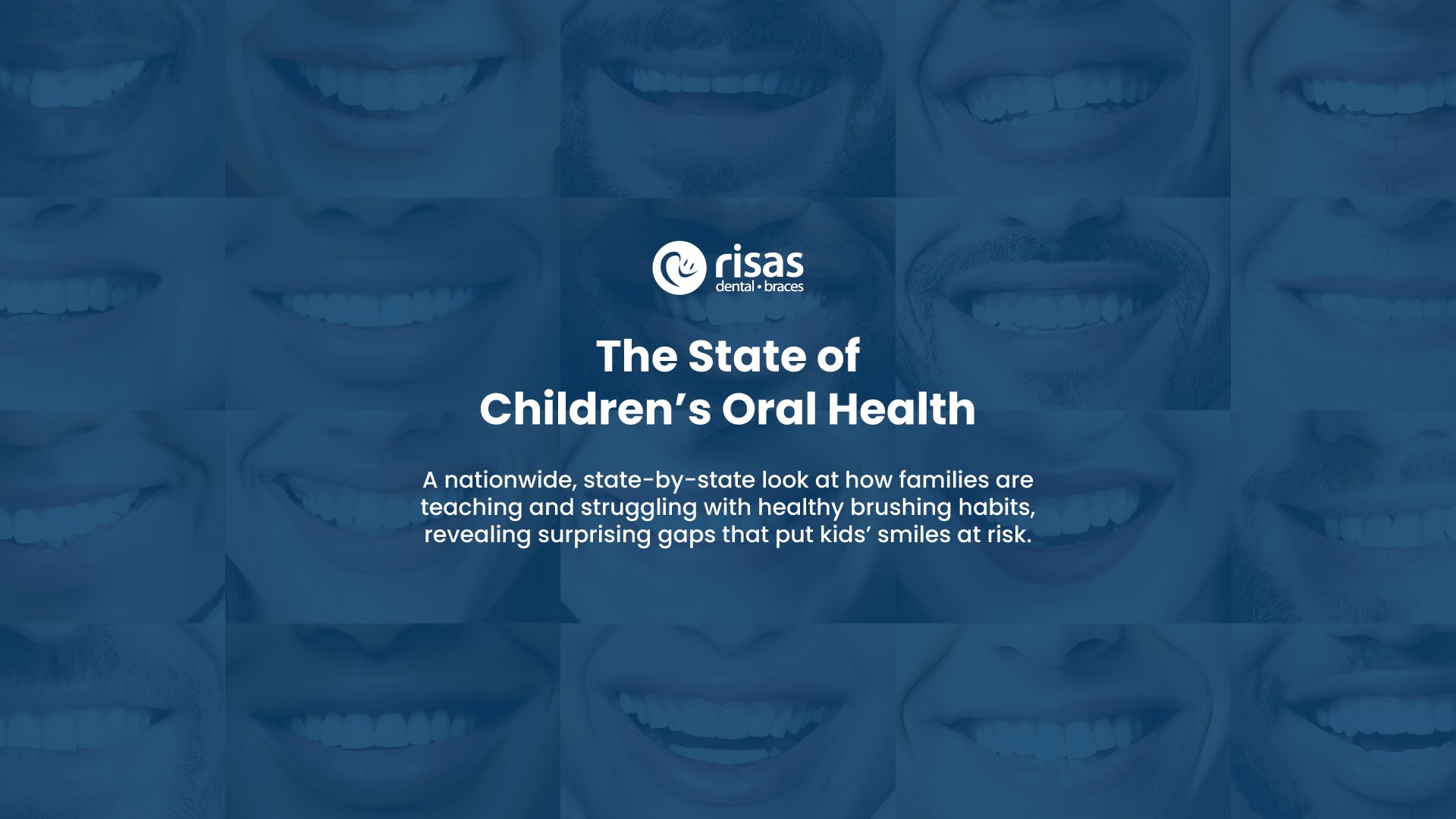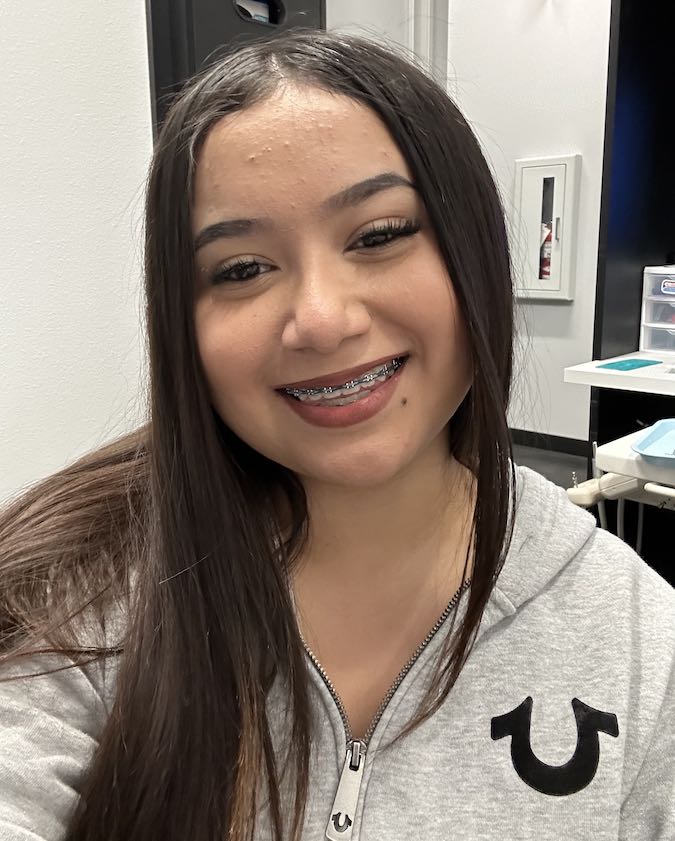The state of children’s oral health
Many of the most common oral health issues begin at home, specifically with childhood habits. Poor routines developed early can lead to long-term dental issues, from cavities and gum disease to confidence issues and costly treatments.
So, how often are kids really brushing? Are trips to the dentist a regular occurrence? And how confident do parents feel about teaching their children the right oral hygiene techniques?
To find out, the team at Risas Dental conducted a survey of 1,500 parents to uncover the current state of children’s oral health. From brushing battles to sugar struggles, the results reveal what’s really going on when it comes to oral hygiene in American households.
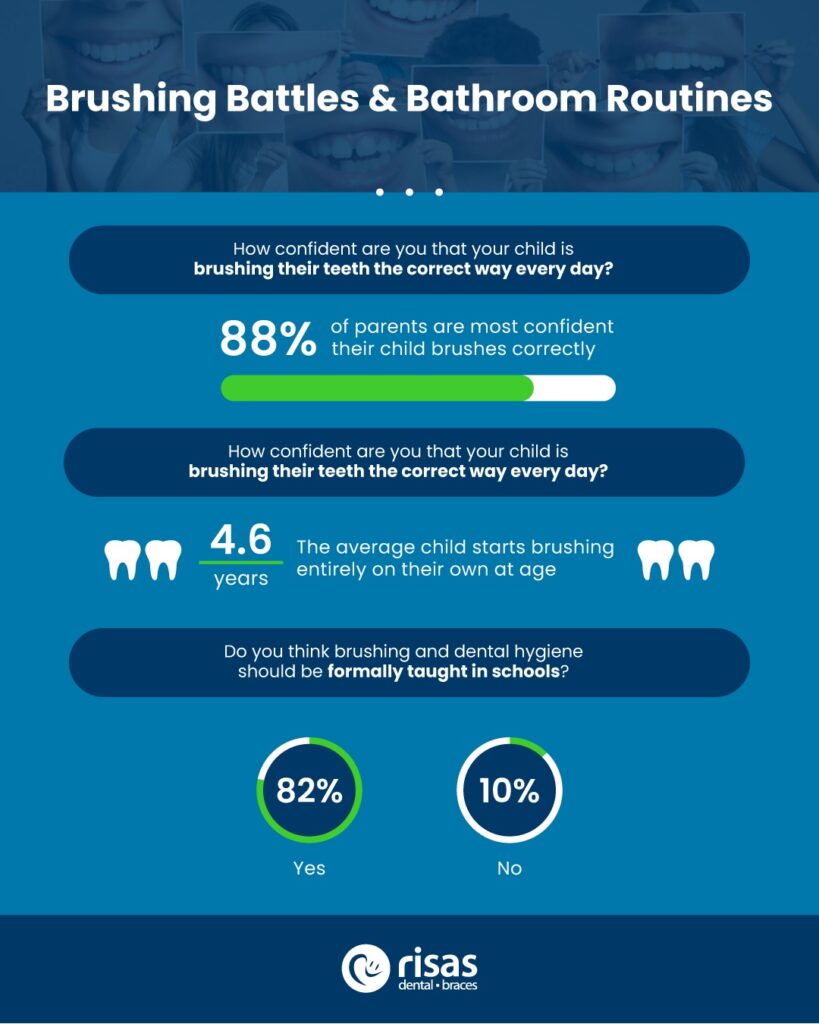
Brushing battles & bathroom routines
When it comes to their children’s dental hygiene, most parents feel as though they have things under control. We found that 87% of parents are confident about family brushing habits, with just 9% expressing doubt. Confidence is the highest among parents with 1-2 children (86-88%), yet it dips to just 76% in families with four or more kids. This suggests that the more children in the home, the harder it might be for parents to keep tabs on everyone’s brushing routines.
Digging deeper, a quarter of parents admit that getting their kids to brush daily is a battle, with this struggle worsening in households with 3 or more children (where 37% often face resistance). Still, 28% of our participants revealed that their kids willingly brush on most days of the week.
However, despite good intentions, 51% of children are finding ways to dodge brushing altogether. Nearly half (47%) are only brushing for a few seconds, 13% are skipping toothpaste, and 25% are pretending to brush. These behaviors become more common as family size increases, rising from 21% in a one-child family to 32% in a 3-child family.
Parental role modeling influences the hygiene habits children adopt too. We found that 59% of kids see their parents brush twice a day. Meanwhile, 23% see them brush once a day, and a smaller but still notable percentage (3%) never see their parents brush at all. On average, children are brushing independently at 4.36 years old, and in big families, solo brushing starts as young as 2.7 years.
We also found a strong desire among parents for schools to step in, with 87% believing that dental hygiene (particularly effective brushing) should be taught in the classroom.
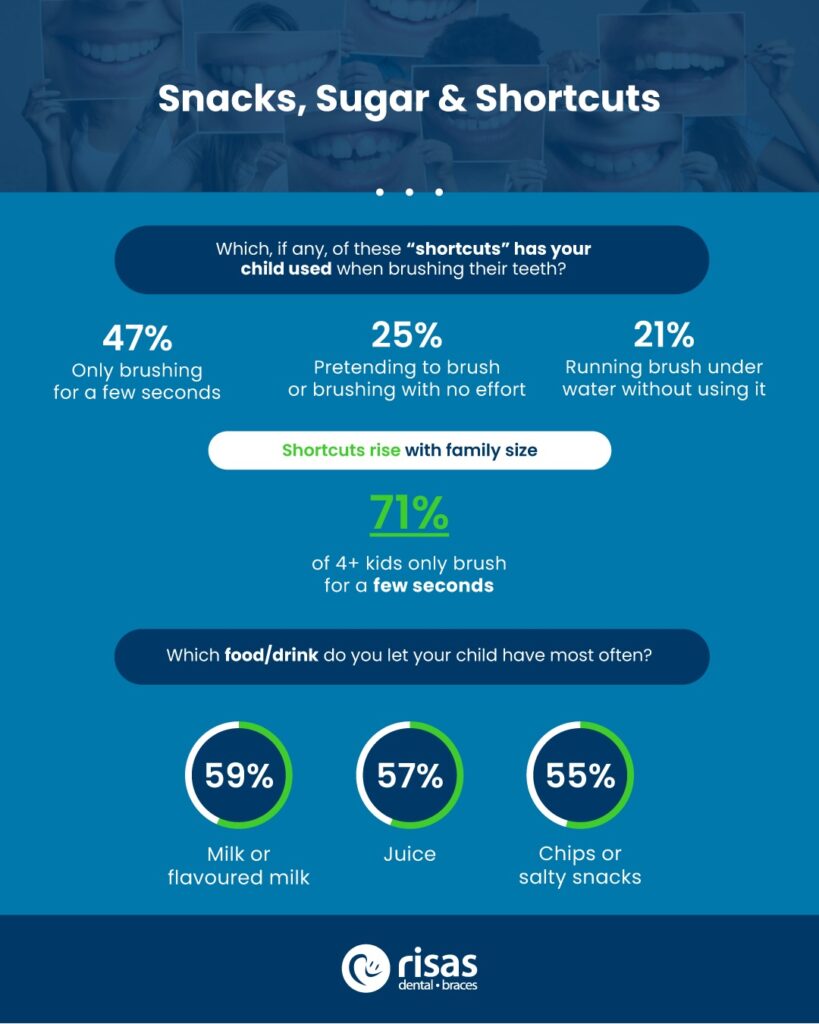
Snacks, sugar & shortcuts
Diet plays a crucial role in oral hygiene too, and it appears that many children are being exposed to significant amounts of sugar.
We found that commonly consumed items include flavored milk (59%), juice (57%), and fruit snacks (51%). Almost half of those we surveyed said that their children consume ice cream and fast food regularly, too.
What’s more, parents with more children are more likely to allow sugary treats and drinks, with this combination of sugar and short brushing times putting children at a higher risk of issues down the line.
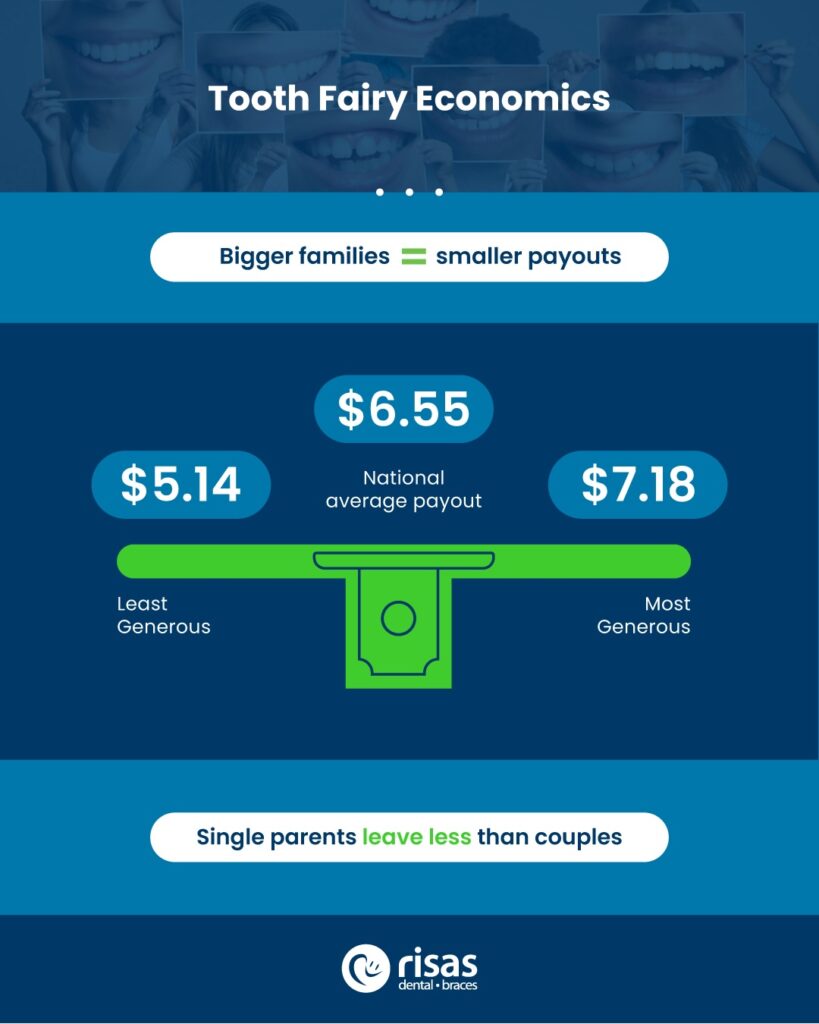
Tooth Fairy economics
While it might just seem like a fun tradition, the Tooth Fairy can offer an interesting glimpse into how families value and engage with their children’s oral health.
When asked about how much they typically leave under their kids’ pillow, the average stands at around $6.55, with 39% of parents leaving between $2–$5. Single parents tend to leave slightly less ($5.65), compared to couples ($7.02).
The most generous payouts come from two-child families (averaging $7.18 per tooth), while families with four or more kids leave an average of $5.14.
While the amount left doesn’t directly reflect brushing habits or tooth health, it does signal how families recognize dental milestones. A visit from the Tooth Fairy can be more than just exciting for kids, it can help build positive associations with taking care of their teeth.
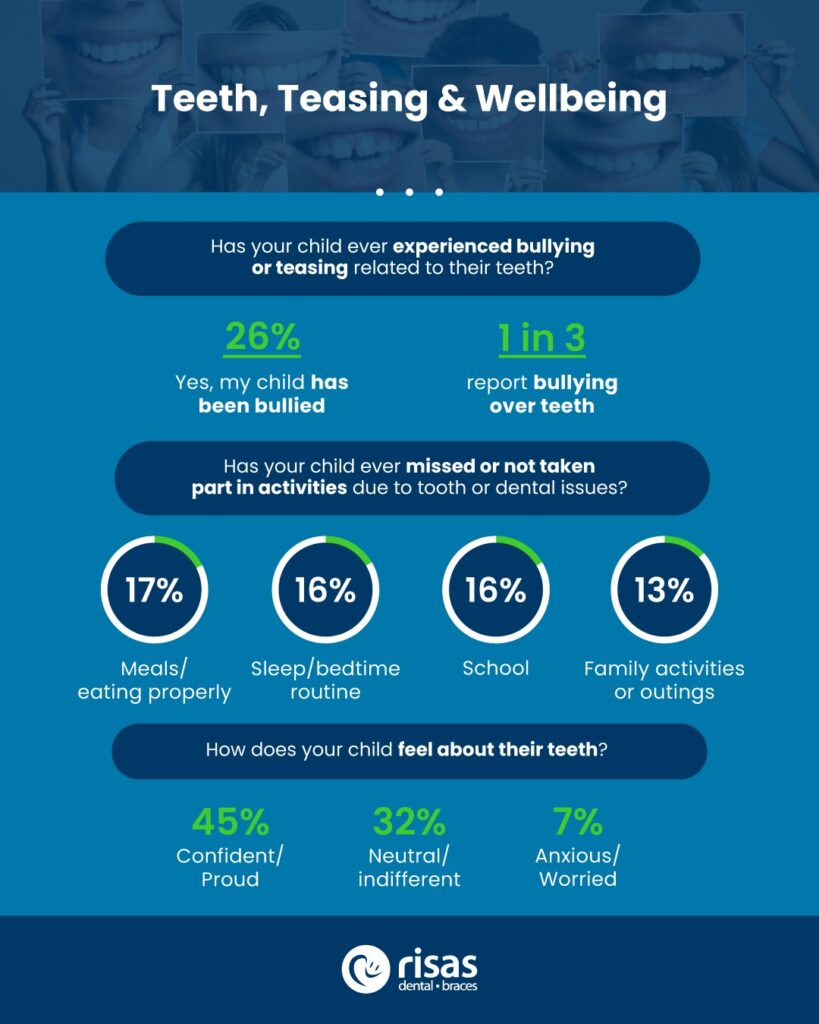
Teeth, teasing & well-being
Dental hygiene is important for more reasons than one. Inadequate care can lead to teasing and future confidence issues in children, with kids becoming sensitive about their teeth.
Our survey revealed that 26% of children have been teased about their teeth before, with this rising to 33% in 2-child families. We also found that many children are missing activities due to dental issues, including school (16%), sports (11%), and family events (13%). Missing meals (17%) and sleep disruption (16%) were also brought up as additional issues.
As for how children feel about their teeth, 45% reported feeling confident and proud, while 32% feel more neutral about their smiles. A smaller group struggles with negative emotions, with 7% feeling anxious, 6% feeling embarrassed, and 5% feeling frustrated.
Interestingly, children in larger families (4+ children) are the most confident (57%), despite more shortcuts and diet drawbacks.
Final thoughts
So, what can we take away from our survey on the state of children’s oral health? Here are some final insights from our Risas Kids Clinical Director, Dr. Elizabeth Walton:
“The survey highlights the vital role parents play in shaping their children’s oral health, as well as the unique challenges they face, especially those with multiple children. Whether it’s modeling proper brushing, establishing consistent routines, or seeking expert advice, parents are the first line of defense against stopping dental issues before they arise.”
“Finding the time to supervise your children until they can confidently brush solo is key, as well as encouraging them to brush twice a day for at least two minutes. Limiting sugary snacks, booking regular dentist visits, and flossing once they’re old enough are also crucial. Together, these habits can help prevent costly problems.”
“Our findings make another thing clear: oral health impacts much more than just a child’s smile. With more than a quarter of kids admitting to being teased about their teeth, and many more missing important activities due to dental issues, proper care, both at home and in professional settings, is essential.”
Well, there you have it: our insights on the state of children’s oral health across America. With effective brushing habits, as well as encouragement from parents and caregivers, children’s oral hygiene can dramatically improve, reducing the risk of long-term issues and expensive treatments.
It’s not only at-home care that’s crucial though, with regular check-ups also playing a key part in ensuring a healthy smile. If your child is due a check-up soon, you can browse our kids dental services for expert, personalized oral health guidance.
And if you’re in the Phoenix area, we now offer children’s dentistry at our first Risas Kids Dental office! With flexible early morning and after-school appointment times, plus free exams for children under two, we offer professional dental care for the whole family.
For more information on available treatments, browse our full list of locations. Or if you’re looking for additional insights, read a couple more of our blog posts including: How to make the first Tooth Fairy visit magical, and when do kids start losing teeth?
Methodology
3Gem survey of 1,500 US parents aged 18+ with children aged 2–15.
[LM1]Insert commentary explaining the long-term implications of poor brushing habits formed early in life, including preventable cavities, enamel erosion, and costly interventions.
